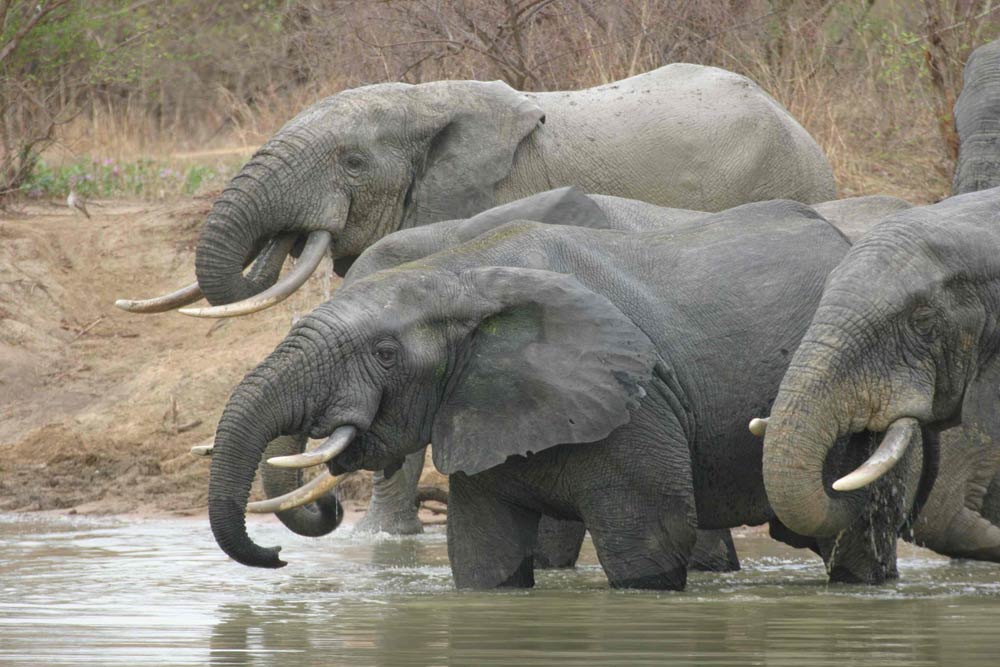Orphaned Elephants Face Lifetime of Negative Social Effects

Poaching and habitat loss may be putting elephants at risk of losing their culture — the learned behaviors that seem to be passed down from generation to generation, researchers say. What's more, the trauma of separation and displacement may have lasting psychological impacts on the creatures resembling post-traumatic stress disorder in humans, according to a new study.
There's truth in the saying "Elephants never forget." The huge land mammals are known to recognize individuals that they haven't seen in decades. One study published a few years ago showed that the older female matriarchs of elephant herds in Africa even seemed to remember distant sources of water from their youth, which helped keep their groups alive during later periods of drought.
Older elephants have a deep well of experience to draw from: The average life span of an elephant in the wild is 60 or 70 years. Though social learning has not been definitively proven among elephants, there is evidence that older family members pass down their knowledge to youngsters. But the species' complex social structure can be disrupted when herds are fragmented and calves are orphaned, researchers say. [Elephant Images: The Biggest Beasts on Land]
Social disturbance can also lead to deviant behaviors among youngsters. The authors of the new study pointed to groups of orphaned male elephants in two protected areas in South Africa. Without older males to keep them in check, the young animals became abnormally aggressive and killed 107 rhinoceroses over a period of 10 years, the researchers said.
"We previously knew very little of how crucial skills of communication and cognitive abilities that are at the basis of complex societies might be affected by disruption," study researcher Karen McComb, from the University of Sussex in the United Kingdom, said in a statement. "While elephants in the wild can appear to recover, apparently forming quite stable groups, our study was able to reveal that important decision-making abilities that are likely to impact on key aspects of the elephant's social behavior may be seriously impaired in the long run."
McComb and colleagues conducted experiments with two populations of elephants. One group was made of up orphans introduced to Pilanesberg National Park South Africa in the early 1980s and 1990s after a series of culling operations. The other group was a relatively undisturbed population in Amboseli National Park, Kenya.
The researchers played elephant vocalizations, both familiar and unfamiliar, to simulate different levels of social threat for the two groups of animals and observed their reactions.
Sign up for the Live Science daily newsletter now
Get the world’s most fascinating discoveries delivered straight to your inbox.
Compared with the Pilanesberg elephants, the Amboseli group made better decisions in correctly recognizing foreign elephants as a greater threat than familiar elephants, the study found. This herd also showed it could distinguish between the calls of elephants of different age classes; the Amboseli elephants were most defensive in the face of calls from older animals, representing more dominant individuals, the researchers said. A rank-appropriate response is necessary to keep the peace in elephant hierarchies and avoid violence.
While the Wildlife Conservation Society has estimated that some 25,000 African elephants are killed each year, the new research highlights that the survivors of poaching and culling operations may be at risk for unseen social problems.
"The dramatic increase in human disturbance is not just a numbers game but can have profound impacts on the viability and functioning of disrupted populations at a deeper level," study researcher Graeme Shannon, also of Sussex, said in a statement.
The findings were detailed online Oct. 23 in the open-access journal Frontiers in Zoology.
Follow Megan Gannon on Twitter and Google+. Follow us @livescience, Facebook & Google+. Original article on LiveScience.











